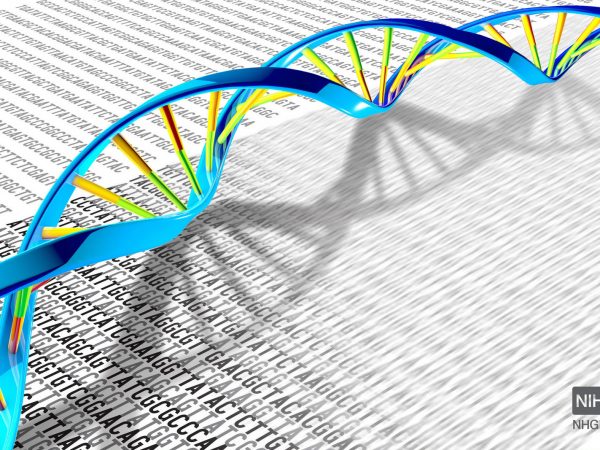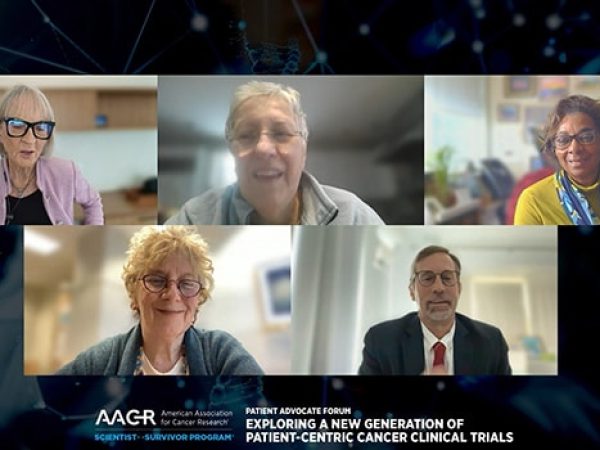Stakeholder Perspectives on Non-clinical Models for Immuno-Oncology Products
On September 6, 2018, the U.S. Food and Drug Administration (FDA) and the American Association for Cancer Research hosted a public workshop, Non-clinical Models for Safety Assessment of Immuno-Oncology Products. Academics, industry, regulators, and biomedical research funders gathered to review the state of the science and discuss opportunities to develop better non-clinical approaches for safety assessment and dose selection for immuno-oncology products in patients, with specific focus on immune checkpoint stimulators and inhibitors (ICI/ICS).
Immuno-oncology products have revolutionized treatment for certain types of cancers, and with more of these products under development, non-clinical models that can predict toxicities, assess safety, and guide first-in-human (FIH) dose selection are needed to ensure efficient development of new therapies.
Nearly 800 individuals participated in the workshop either in-person or via webcast to address key questions, including:
- How are non-clinical models used in academia and industry to assess activity or toxicity of immune checkpoint inhibitors and stimulators?
- What novel approaches could improve the efficiency of dose-finding trials?
- Could broader use of companion animal studies advance the field?
- Are funding opportunities from the National Cancer Institute (NCI) available to support future progress in this area?
Director of the FDA Oncology Center of Excellence Richard Pazdur, MD, urged workshop attendees to challenge themselves when developing immuno-oncology therapies. “Far too often we have attempted to take what we do with cytotoxic drugs and directly transfer that into a new class of drugs or therapies, and many times that might not be appropriate,” Pazdur said. Pazdur noted that his call-to-action for workshop participants was “to think out(side) of the box regarding these [immuno-oncology products] and how we evaluate them from a non-clinical perspective.”

U.S. Food and Drug Administration Oncology Center of Excellence Director Richard Pazdur, MD, encouraged attendees to think outside the box when developing non-clinical models for immuno-oncology products.
The regulatory perspective
By John K. Leighton, PhD, Director, Division of Hematology Oncology Toxicity (DHOT); Haleh Saber, PhD, Deputy Director, DHOT; and Julie Schneider, PhD, Regulatory Scientist; Office of Hematology and Oncology Products, FDA
Currently available mouse models are not designed to predict immuno-oncology product-induced toxicities in patients and adding on safety endpoints to non-clinical models of activity may not provide meaningful information. A “reverse translational” approach may be more promising, where individual animal models are selected or developed to investigate specific toxicities observed in patients. There is no single mouse model that is likely to be useful across the range of therapeutic targets.
When interrogating adverse reactions in patients, Gregory Beatty, MD, PhD, of the University of Pennsylvania School of Medicine, presented evidence suggesting better prediction of findings in humans, when mice had previously experienced organ insult or were exposed to pathogens. This suggests that general toxicology studies in healthy animals may not be the optimal approach for safety assessment for ICI/ICS. Factors affecting immune responses that are not currently addressed through standardized safety studies using these healthy animals include aging, previous exposure to antigens, and the microbiome.
Additionally, many challenging safety and toxicity questions for immunotherapy agents and combinations may best be addressed through innovative clinical trial designs, as discussed at the workshop by Robert Li, PhD, DABT, of Genentech. Li presented a dose-escalation case study in which patients were pretreated with vemurafenib (Zelboraf), a small molecule drug, before being administered a combination of vemurafenib and atezolizumab (Tecentriq), an ICI. Given that clinical safety data was available for each drug on its own, conducting this study in a phase I clinical trial was a more feasible approach than a non-clinical study because non-clinical studies for these drug classes are normally conducted in different types of animal models. Combination studies in animals are not always feasible (due to lack of pharmacologically relevant species) or predictive of human toxicities. Innovative clinical trial approaches can answer some safety questions, but advancing non-clinical models is important for answering more safety questions outside of the clinical setting.
Insights from academia
By Gregory L. Beatty, MD, PhD, Assistant Professor of Medicine, University of Pennsylvania Perelman School of Medicine; Marcela V. Maus, PhD, Director of Cellular Immunotherapy, Massachusetts General Hospital; and Lei Zheng, MD, PhD, Associate Professor of Oncology, Johns Hopkins University School of Medicine
Animal models are best suited for studying known immune-related toxicities. No current animal models can accurately predict off-target toxicities of immuno-oncology products (off-target toxicities are adverse events at targets other than the intended therapeutic target). Although it is possible to observe some on-target toxicities (adverse events resulting from interaction of the therapeutic with its intended target) in certain models, such efforts are dependent on the cross-reactivity of the target of interest between different species.
One approach that has demonstrated clinical utility is to study the underlying biology of immune-related toxicities that were first identified in patients using appropriate animal models. Unfortunately, there is no single animal model for studying all immune-related toxicities; models must be matched to the question being asked. Employing models that closely resemble the human pathogenesis under investigation and ensuring clinically relevant conditions improves our understanding of immune-related toxicities and may enhance prediction capabilities.
Existing metrics for assessing toxicity responses in animal models may be insufficient for immune-related toxicity questions. Metrics such as hepatic enzyme levels, weight loss, organ pathology, and serum cytokines, can undergo alterations even in the absence of overt symptoms. Additionally, subclinical pathologies (e.g., low-grade hepatitis or colitis) may need to be incorporated into models to better predict immune-related toxicities from immuno-oncology products. Other factors such as age, co-morbidities, and concomitant medications can affect the immune system and may be independent determinants of immune-related toxicities, further complicating the identification of toxicities from immuno-oncology products.
Determining FIH doses is also a challenge. Immune-deficient mice are the standard model for predicting efficacy with these therapies, but usual weight-based dosing strategies in mice are not easily scalable to humans as they tend to overestimate the needed dose. This is likely because the human immune cells that are the basis of the treatment survive more easily in humans compared to mice. With sound dosing strategies in patients for these therapies, reducing toxicity may not necessarily mean sacrificing efficacy.
Industry insights
By Helen Haggerty, PhD, Distinguished Research Fellow, Bristol-Myers Squibb; Danuta Herzyk, PhD, Senior Scientific Director, Merck & Co.; Sarah Javaid, PhD, Associate Principal Scientist, Merck & Co.; Robert Li, PhD, Senior Scientist/Toxicologist, Genentech; and Alan Korman, PhD, Vice President, Bristol-Myers Squibb
There are significant challenges in using animal models to predict the immune-related adverse events (irAE) observed with immune checkpoint inhibitors and costimulatory agonists. As the immune system is complex, diverse, and dynamic, its response to these therapeutics is highly dependent on the host’s immune system, which is influenced by factors such as genetics, age, health status, co-medications, and previous exposures. In addition, irAEs in patients are low in incidence, delayed in onset, and have no clear dose/exposure response relationship, making it very difficult to reproduce these events in non-clinical models.

Helen Haggerty, PhD, from Bristol-Myers Squibb provided valuable insights from industry on non-clinical models for safety assessment of ICI/ICS products.
As our regulatory and academic colleagues articulated above, there are similarities in the immune system across species, but also many differences that influence clinical translation. Animal models involving mice and non-human primates have utility to indicate potential (not unexpected) risk of inflammatory changes in animal tissues but could not predict specific organs in humans that would be most sensitive to such changes. While some mouse models can recapitulate findings in humans, many were unsuccessful suggesting that underlying human and/or disease-specific factors are the key contributors to clinically observed irAEs. Comprehensive analysis of available data from multiple animal species and models used in studies addressing safety of checkpoint inhibitors provides an overall “directional” risk assessment of this class of drugs, i.e. exacerbation of pre-existing inflammation in different organs.
Since the mechanism of toxicity, immune activation, cannot be separated from the mechanism of efficacy, it is important to be able to define the pharmacologic active dose (PAD), the pharmacodynamic range (PD), and dose response of a therapeutic to aid in setting safe starting doses and guide in dose escalation in the clinic. Integrated analysis based on in vivo pharmacokinetic, PD, receptor occupancy data from healthy animals and murine tumor models of efficacy, as well as in vitro data with human cells is necessary to help define the PAD.
Many of these tumor models involve a rapid tumor growth and require very high doses of a therapeutic to achieve anti-tumor activity in a short study duration. Under such conditions, establishing a linear dose-response and determining the minimal PAD would be difficult. Currently, the minimally anticipated biological effect level (MABEL), which is often derived from in vitro data, has been used to set a starting dose for FIH oncology trials with immune activators. This approach can lead to a very conservative suboptimal dose-escalation schema that while safe, provides little benefit to the cancer patient and takes a long time to escalate to a desired efficacious dose. Therefore, further evaluation of the use of PAD vs. MABEL in setting starting doses is warranted to better balance the risk of a significant safety concern as compared to the impact of not treating a life-threatening disease such as cancer with an efficacious dose.
In effort to make greater strides in efficacy, combinations of anti-cancer agents are being employed to enhance the immune response to the tumor. However, this has also led to greater incidence and severity in irAEs. The challenges in assessing the safety of combined immunomodulatory biologics and small molecule therapeutics are further complicated due to the fundamental differences in animal models commonly used for non-clinical assessment of each kind of molecule. One of the practical approaches commonly used in safety assessment for this kind of combination is to evaluate the totality of knowledge of each molecule including the target biology, pharmacology, and toxicity profiles of each agent, known as a weight-of-evidence assessment. In some cases, this may be a more effective way to design the clinical development strategy to better manage the potential safety risk of the combinations.
NCI: Support through programs and funding
By Amy K. LeBlanc, DVM, Director, Comparative Oncology Program, National Cancer Institute
While mouse models may not be entirely predictive of immune-related toxicities, companion animal models could hold more promise. Comparative oncology is the inclusion of naturally occurring cancers seen in companion animals into cancer biology and drug development studies. The NCI Comparative Oncology Program is a federally based catalyst for the expanded role of pets in oncology drug development for humans and provides national leadership in the conduct of comparative oncology clinical trials through the NCI Comparative Oncology Trials Consortium (NCI-COTC). Domesticated dogs and humans share the same environment and are exposed to the same types of environmental carcinogens. Canine cancers often have similar features to human cancers, such as histological appearance, cytogenic abnormalities, therapeutic response, acquired resistance, and background genetics. Clinical trials carried out in pet dogs through the NCI-COTC infrastructure have successfully evaluated a wide variety of immunomodulating agents, including immune checkpoint blockade antibodies, oncolytic viruses, immune-cytokines, therapeutic vaccines, and cell-based therapies. These trials have and will continue to improve cancer drug development for human patients, saving both human and canine lives.
NCI: programmatic and funding opportunities
Program Director Mariam Eljanne, PhD, of the Division of Cancer Biology at the National Cancer Institute presented an overview at the workshop of scientific and funding programs that support work in this area. Among them, the Human Cancer Models Initiative (HCMI) is an international consortium generating novel human tumor-derived culture models with associated genomic and clinical data. The Oncology Models Forum provides a resource for grantees and other stakeholders to share data, images, and/or informatics tools created in the development and analysis of these models. With regard to funding opportunities to support such scientific work, two open R01 funding opportunities are available to support research in this area: Research Projects to Enhance Applicability of Mammalian Models for Translational Research and Collaborative Research with Mammalian Models for Translational Research.
Immuno-oncology products represent an important step forward in cancer research, but to ensure they are developed efficiently, robust non-clinical models that can help address safety and efficacy questions are needed. Continued collaboration and communication between government agencies, academia, and industry, and innovative thinking will be vital to finding efficient ways to develop new or utilize existing non-clinical models to address these questions.
As our understanding of immuno-oncology products increases, models that would predict toxicities and guide FIH dosing would make drug development more efficient by helping researchers make strategic and intelligent choices about which therapies to pursue.
Meeting materials from the FDA-AACR Non-clinical Models for Safety Assessment of Immuno-oncology Products Workshop, including transcripts, and select slides and recorded presentations, are now available online.




